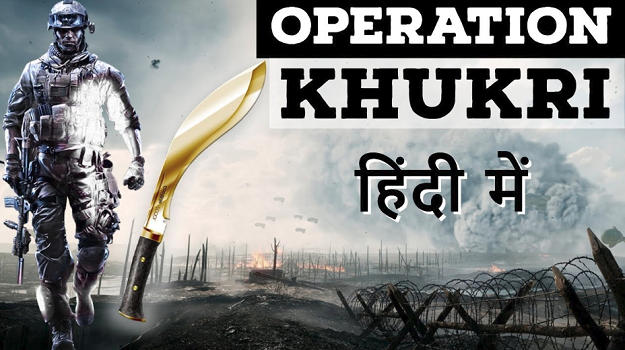Table of Contents
What was Operation Khukri?
Operation KHUKRI was an unique multinational operation launched in the United Nations Assistance Mission in Sierra Leone (UNAMSIL), involving India, Ghana, Britain and Nigeria between 13–16 July, 2000 The aim of the operation was to break the two month long siege laid by armed cadres of the Revolutionary United Front (RUF) around two companies of Gorkha Rifles Infantry Battalion Group
Who are the Gorkhas and what is a Khukri?


The Gurkhas or Gorkhas (Nepali: गगोरखखालल) are the soldiers of Nepalese nationality recruited
in the British Army, Nepalese Army, Indian Army, Gurkha Contingent Singapore, Gurkha Reserve Unit Brunei, UN Peace Keeping force
“If a man says he is not afraid of dying, he is either lying or he is a Gurkha’’ – Field Marshal Sam Manekshaw, Indian Army

• From 1991 to 2002, the Sierra Leone was engulfed in a civil war which devastated the country. • The war was characterized by extreme brutality and widespread human rights abuses against civilians.
• It left more than 50,000 people dead, much of the country’s infrastructure destroyed and over 2 million Sierra Leoneans displaced as refugees in neighbouring countries.
- In October 1999, the United Nations agreed to send peacekeepers to help restore order and disarm the rebels

- By mid-April 2000, two of the companies of INDBATT-1 were deployed in Kailahun, while the rest were deployed in Daru.
- However the situation at Kailahun kept deteriorating, and the two companies of 5/8th Gorkha Rifles remained in their base surrounded by hundreds of RUF rebels of the 1st Brigade
- The rescue plan/ battle was planned to involve five phases:
- Phase I: Mobilisation of UNAMSIL forces.
- Phase II: Pre-emptive strikes by the helicopters, and breakout by the besieged forces at Kailahun. The UNAMSIL forces were to secure the area for a clear extraction.
- Phase III: Link up of the besieged Kailahun column and Special Forces units at Giehun. 5/8 Gorkha Rifles (Daru column) to secure Pendembu.
- Phase IV: Link up of Daru column and Kailahun column at Pendembu. Extraction to begin by air.
- Phase V: All forces to fall back to Daru
- UN missions have their own unique — and complicated — dynamics between officials, military commanders, contributing countries and the UN Security Council in New York
- The situation was further complicated by the legal status of the UN mission, and its limited mandate to actually use force. The UN was keen to somehow negotiate with the rebels through diplomatic channels to secure the release of the Indian soldiers

- Ground units and Airborne units
- – 223 troops of 5/8th Gorkha Rifles besieged at Kailahun
- – Approximately six companies of riflemen of the 5/8th Gorkha Rifles at Daru, elements of 14th Mechanised Infantry Battalion
- – One Quick Reaction Company of Mechanised Infantry and Para commandos
- – 18th Grenadiers
- – QRC of Mechanised Infantry
- – One Company of engineers
- – 2 Para (SF) Air support
- – Helicopters
REASONS FOR SUCCESS
- Synergisation of all Available Assets.
- Simultaneous Operations.
- Real Time use of Human Intelligence (HUMINT) and Signal Intelligence (SIGINT).
- Good Intelligence of RUF Activities and Intentions.
- Deception and Security During Build Up.
- The success of Operation KHUKRI gave the RUF its worst defeat in recent history and at the same time gave a tremendous boost to the UNAMSIL forces in particular and to the UN as a whole.
- The detractors of the UN were silenced and the potential of this noble institution was once again displayed.
- The greatest reward for the Indian Peacekeepers was the rapturous reception given to them by the people of Daru as they came triumphantly back from battle.
- It was the welcome of a long suffering and desperate people who understood that there were people in this world who would shed their blood for them. Perhaps, that is why they helped build the KHUKRI Memorial in Daru barracks overlooking the Moa River.

Indian History | Free PDF
By Dr. Mahipal Singh Rathore
Facebook Id-> facebook.com/mahipalsinghrathore





















 WhatsApp
WhatsApp